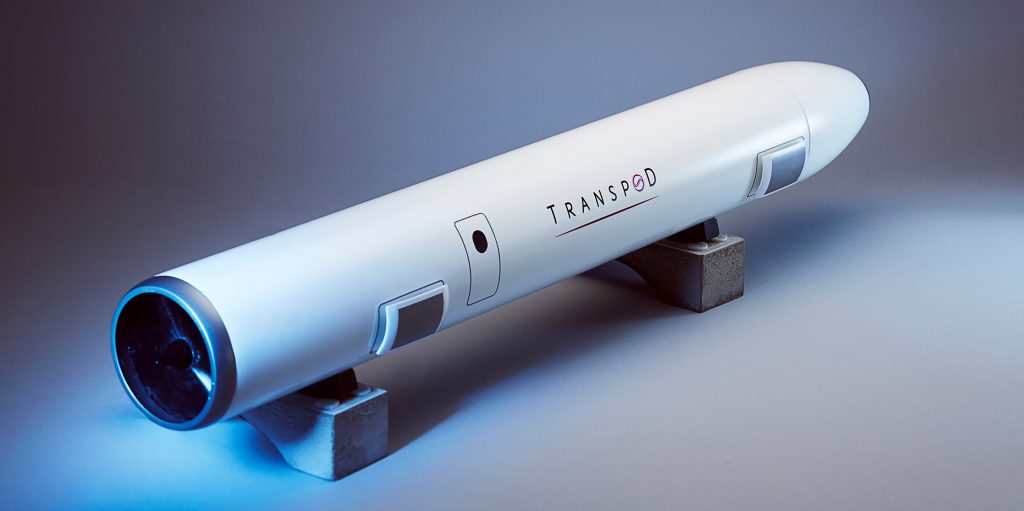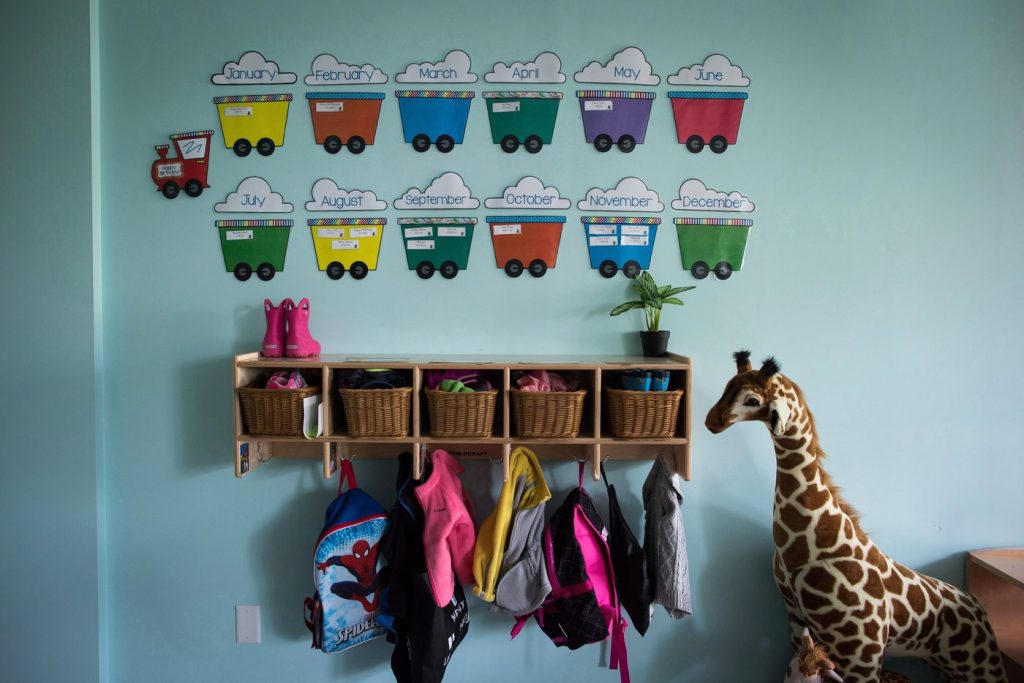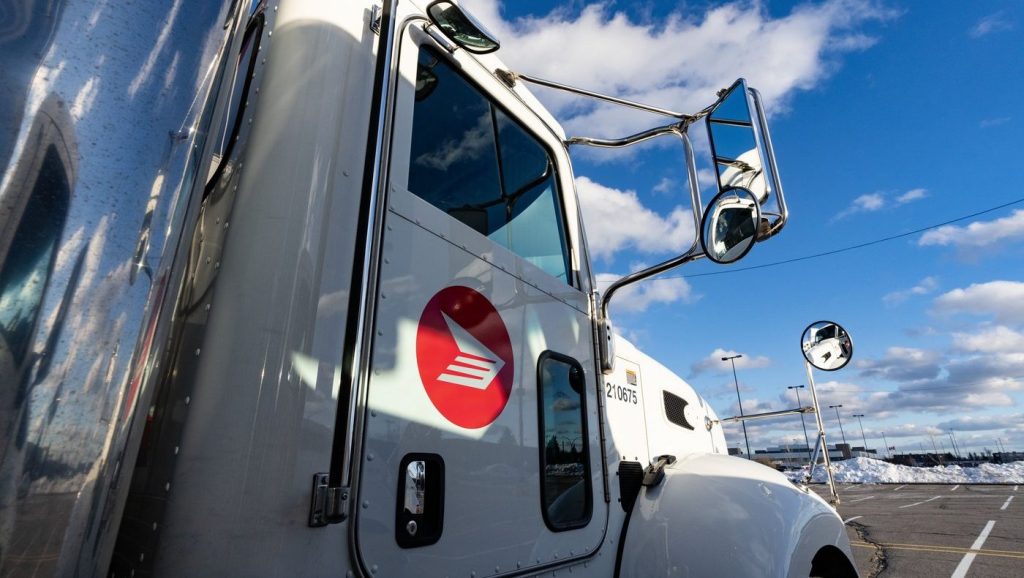Hyperloop proposal back on track as Alberta government reaches agreement
Posted August 25, 2020 1:47 pm.
Last Updated August 25, 2020 8:30 pm.
CALGARY (660 NEWS) — “There’s nothing on Earth like a genuine, bonafide, electrified, six-car Monorail,” claimed Lyle Lanley, the infamous Monorail salesman in a 1993 episode of The Simpsons.
While the project ended disastrously in the cartoon, a more futuristic version could be back on track, in reality, closer to home.
That’s because a memorandum of understanding (MOU) has been reached between the Government of Alberta and Transpod, a France-based company that is looking at constructing hyperloops all around the world.
Unlike a conventional train or even a monorail, a hyperloop uses magnets and a vacuum tube to move passengers and goods at extremely high speeds with electric power and without friction slowing things down.
The announcement was made Tuesday morning, leading to discussion and a flood of Simpsons memes shared on social media. But the idea is not new, as it seemed like it was put out to pasture at the end of 2019.
https://twitter.com/Tommy_Slick/status/1298251713862750211
“We have no plans that I’m aware of to get involved in a hyperloop,” said Transportation Minister Ric McIver in November, as Transpod said they had not received any feedback on their proposal since the United Conservative Party beat the incumbent NDP in the provincial election.
While in power, the NDP had greenlit the construction of a test track near Red Deer that would showcase hyperloop technology along a short ten-kilometre long stretch.
RELATED: Hyperloop idea losing traction in Alberta
But times have changed, and now the project is back on track.
“The Transpod folks showed up to our office,” said McIver on Tuesday, after the agreement was announced in the morning hours.
Meetings took place over the next few months, and the province feels this can be a productive idea for both the economy and quality of life.
Alberta has signed a Memorandum of Understanding to support a feasibility study of a @TransPod_Inc hyperloop between #Calgary and #Edmonton.
If developed, this could mean a fully electrified high-speed corridor between our two cities within a decade.https://t.co/evXAjKUiFI pic.twitter.com/rDfskpTou4
— Jason Kenney ???????????????????????? (@jkenney) August 25, 2020
So they are back where they started, with another ten-kilometre test track being proposed and Alberta chosen as the centre for developing hyperloop technology in the region, which can then be exported to other markets around North America.
“There’s an opportunity to contribute to the economic diversification to bring private players, too, and to initiate major infrastructure investment,” said Sebastian Gendron, CEO of Transpod.
Gendron said this is very encouraging, and they realized they had to make a more clear appeal to the UCP for discussions on the idea following the transition of governments in the spring of 2019.
The plan is ambitious and could have major benefits. On top of cutting commute times between the cities down to around 30 minutes, Transpod believes it can create almost 40,000 jobs over the next decade, pull in up to $200 million in private investment, and cut greenhouse gas emissions by 300,000 tonnes per year.

“They are enthusiastic, they believe they have it figured out and they just want to demonstrate that,” added McIver. “We want to see the Transpod folks succeed. We’re cheering for them and more than that we are trying to help them.”
Mayor Naheed Nenshi also expressed optimism about the idea when asked on Tuesday.
“We’ve talked about high-speed rail for so long since I was a little kid,” said Nenshi. “If this is a technology that really is close to being real, then that could really make a huge difference for the Calgary, Edmonton, Red Deer tech corridor as well as more safe movement of goods and people through that corridor.”
BIGGER PLANS
But it doesn’t just end in Alberta. Transpod has much grander ideas when it comes to high-speed transportation, including taking it to major corridors in eastern Canada and connecting Canadian cities with American ones.
“There’s a real appetite for infrastructure projects,” said Gendron.
This could make Alberta a hub for technological development, as a big part of the MOU is making this province a centre for research, as most of what happens in terms of hyperloop development will be behind the scenes until test tracks are built and a final line is put up between Calgary and Edmonton around 2025.
Gendron said a link between Toronto and Montreal is continuing to make headway, with plans to connect it to Chicago. There are also continual discussions happening in the European Union and Australia.
But due to the COVID-19 pandemic, Gendron added they are also looking at using their technology to build things like ventilators. Plus, the hyperloop is capable of shuttling cargo as well and that can ease some of the strain on supply chains as people order more goods online and expect faster service.
Ideas such as the hyperloop are also on the federal government’s radar as it fits in with a wider goal to combat climate change.
“There’s a lot of interest,” said Minister of Environment and Climate Change Jonathon Wilkinson. “It would enable folks to get to places more quickly, but it would also help us with respect to the greenhouse gas emissions of getting people out of their cars and potentially enabling people to think about options other than short-haul flights.”
They don’t quite know exactly how viable it is, but Wilkinson said they are okay with letting a private company like Transpod take the helm and figure out how best to develop it. In the case of Alberta, no public money is being put forward although the government is offering the land for a test strip.
REALITY OR SCIENCE FICTION?
Despite the recent confidence, the question remains: can a hyperloop actually exist?
The concept has been discussed for decades and is essentially similar to pneumatic tubes that George Jetson would use to quickly shuttle himself to Mr. Spacely’s office to receive an ear-lashing in the 1960’s animated sitcom The Jetsons.

Numerous studies have been done just like this proposal, but without any firm results yet. This naturally makes it the target of sceptics.
“There’s a sort of recurring theme there in terms of the feasibility studies being based on these sort of novelty projects. The newfangled technology that is driving the interest. Which actually I think is a bit of a problem, to be honest,” said Ryan Katz-Rosene, a political scientist at the University of Ottawa.
Katz-Rosene is also unsure about the claims of reducing greenhouse gas emissions, especially when you consider the amount of concrete needed to construct the hyperloop and the fact electricity generation is still largely produced in Alberta through the burning of fossil fuels.
This could negate some of the savings, even if the hyperloop itself is not burning fuel directly.
“You have to generate the electricity through renewable or green low-carbon sources. So that’s why I’m always a little bit sceptical now when people propose these super fancy projects as a way to protect the environment,” he said.
It does seem like Alberta is a solid choice for this though, especially as the initial test track can be built on flat land without many challenges on the land.
Gendron admitted that it does seem a bit fantastical, but stands behind their initial research.
“We have to address that kind of science fiction impression,” he said. “One of our objectives this year, and it’s actually under construction right now, is the construction of a technology demonstrator to explain really in detail how it works.”
Gendron said they hope to have a demonstration in Alberta to make it easier to understand, and then that scepticism will hopefully diminish.
Nenshi also does not know for sure that the project is a home run, but there is also no harm in trying either.
“We’ll never unless we continue to do more testing with folks other than one entrepreneur who talks about stuff in the U.S,” in a tongue-in-cheek nod to Elon Musk.
With the idea of a hyperloop coming closer to moving from the science fiction section to our backyard, Gendron hopes people can have a little faith and at the end of the day transportation options are expanded to new frontiers.
“It’s not like the flavour of the day,” he said. “Now it’s a matter of when more than what or how.”








